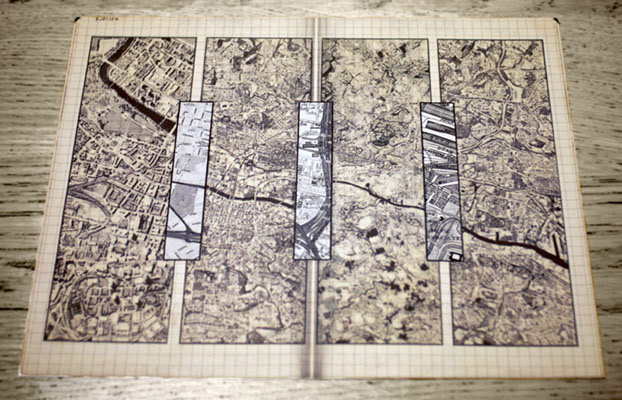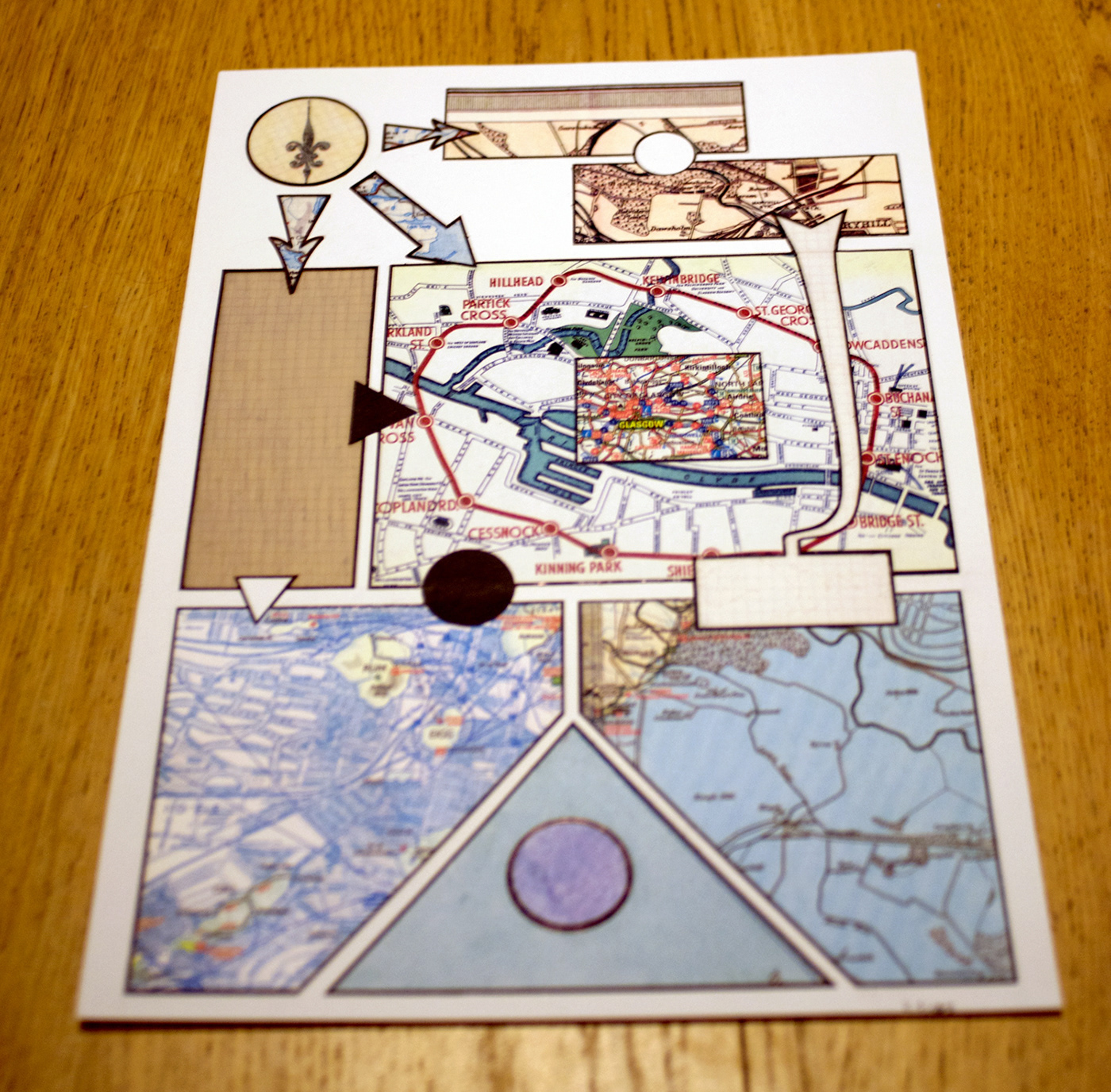Map Comics
As comic book readers, we bring our inherent understanding of the formal elements used in comic books, and tend not to question how and why we read them as we do. Yet things like panel borders, gutters, the design of a spread, and the simple mechanics of how the book is constructed can play into our understanding and interpretation of the narrative contained within. These pieces are an exploration of how these basic elements can be applied outside their normal contexts in order to examine how these strategies may be applied in different mediums.
Gutter comic
Concept
The simple act of framing action with a panel border is a defining characteristic of comics. One of the most important functions of the space between these panels is the implication of the passage of time. In this experiment with form, I incorporated maps in order to play off of the presumed objectivity culturally afforded to cartography. I began playing with the convention of folding maps as seen below, but found the relationship between these different elements to not problematize the function of either form sufficiently.


Outcome

The three inset boxes in the piece cover a period between 1914 and 2010. The larger panels attempt to strip the map itself back as much as possible. Each panel still relates to the section of the inset map, but the visual information has been so compressed that it forms an almost abstract pattern, rather than being legible and fulfilling its function as map.
Map Comic
Concept
While panel borders physically separate scenes and can serve as an indicator of passing time, they also encapsulate place and give navigational cues to the reader. This piece strips back contextual cues as to how the content should be digested, while attempting to retain enough of this essence to still be visually recognizable as a comic. The disjointed, overlapping and 3-dimensionally layered visuals serve to undermine the hierarchy implied by the symbols as well.
Outcome


